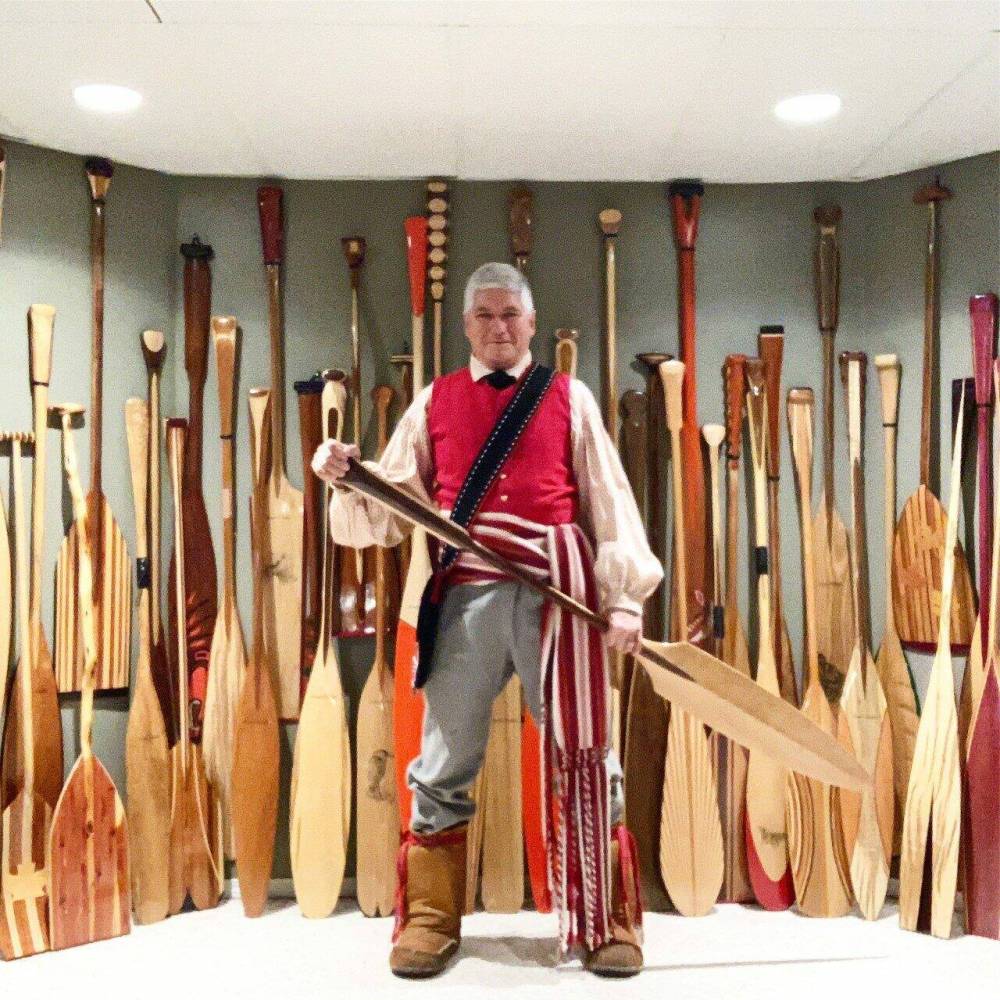Paddles for all
Advertisement
Hey there, time traveller!
This article was published 23/03/2022 (1356 days ago), so information in it may no longer be current.
In 2019, artist, wood-, metal-, and leather-worker, historian, and sort-of-retired vagabond teacher Mark Blieske made a canoe paddle every week of the year. The 52 paddles were on display at Festival du Voyageur in 2020, where Blieske regularly demonstrates his skills. The only thing Blieske enjoys more than making canoe paddles is helping others make paddles.
Blieske, credits Indigenous designers for the canoe paddle.
“Indigenous people figured this out from scratch,” he said.

“I was a tinker and have been a tinker all my life,” Blieske added. His father was a metal-worker and working with metal and wood came naturally for Blieske. After graduating from high school, he studied industrial arts, which he taught for 36 years at Selkirk and Lockport Junior Highs. During his tenure as an industrial arts teacher, he also took students on two to three extracurricular canoe trips per year, totally 86 canoe trips over the course of his tenure as teacher.
In preparation for the five-to-nine-day trips, “kids had to earn the right to go on trips; they had to make their paddles.”
One of Blieske’s former students attested to the success of the canoe trips in response to an outdoor education survey: “When I was 14/15 years old … I was unsure of myself. Seemingly mundane things like paddling a canoe across a lake, figuring out the best place to set up a tent, or just cooking your own meals can do wonders for an adolescent.”
Retirement did not stop Blieske from his involvement with schools and teaching others how to make canoe paddles. He has worked with the Winnipeg Police Service, organizing paddle-making workshops in the inner city. Before the OVID-19 pandemic, Lee Valley sponsored the workshops by supplying the tools.
Blieske has conducted paddle-making workshops all across Canada, making paddles with workshop participants on picnic tables in Nova Scotia and school cafeterias in Ontario. Blieske also teaches traditional woodworking techniques to those who want to learn old school woodworking.
When David Gamble, technology education and STEM consultant for the Pembina Trails School Division, was looking for inventive ideas to incorporate across the division, he stumbled across Blieske and his paddle work.
Gamble invited Bliekse to conduct paddle-making workshops as professional development for all teachers across the division who wanted to take the project back to their home schools “and teach students the craft of paddle making,” Gamble said.
“If I teach the kids to make paddles that is great. But, if I teach the teachers then the program lives on,” Blieske said.
In the three years since the inception of the Pembina Trails paddle program, Blieske has “trained 36 teachers so far and we have another 12 planned for April,” Gamble said.
The classes are small with only 12 teachers. They spend a full day learning by doing. The teachers also learn about the different designs of paddles for different purposes, the historical importance of canoes for trade, and the significance of waterways as North America’s highways. Teachers can sign out divisional tool kits for the duration of their paddle-making units; the tool kits are usually quickly booked for the full year.
The program has been very successful at Vincent Massey Collegiate, where more than 350 students have completed the unit as part of their outdoor education program.
“It’s been really good for our teachers and kids,” Gamble said. “We don’t give enough credit where credit is due. The Indigenous design of paddles and canoes is suited for the environment. The birch bark canoe is still the best design as the lightest and most versatile out there.”
Blieske hopes to offer the paddle-making program to other school divisions.




